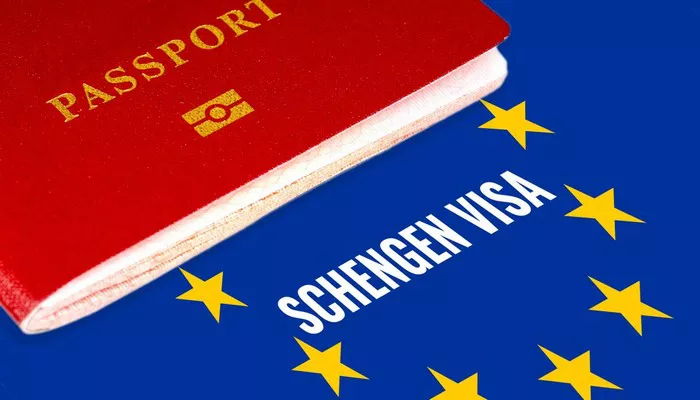The Schengen visa is a pivotal document that facilitates travel within the Schengen Area, a group of 26 European countries that have abolished passport and other types of border controls at their mutual borders. This article aims to elucidate the intricacies of the Schengen visa application process, delineating its purpose, types, eligibility requirements, and the procedural steps involved.
Definition and Purpose
A Schengen visa is a travel document that allows its holder unrestricted movement within the Schengen Area for a specific period, usually up to 90 days within a 180-day period. This visa is instrumental in promoting tourism, business, and cultural exchange among the member states.
The Schengen Area comprises 26 European countries, including Austria, Belgium, Czech Republic, Denmark, Estonia, Finland, France, Germany, Greece, Hungary, Iceland, Italy, Latvia, Liechtenstein, Lithuania, Luxembourg, Malta, Netherlands, Norway, Poland, Portugal, Slovakia, Slovenia, Spain, Sweden, and Switzerland.
Types of Schengen Visas
Schengen visas are categorized into several types, each serving a specific purpose:
1. Tourist Visa: Issued to individuals intending to visit the Schengen Area for leisure, sightseeing, or visiting friends and family.
2. Business Visa: Granted to individuals traveling for business-related activities such as meetings, conferences, or negotiations.
3. Transit Visa: Designed for travelers passing through the Schengen Area en route to a third country. It allows a short stay in the Schengen territory during transit.
4. Work Visa: Required for individuals planning to work or engage in gainful employment within the Schengen Area.
5. Student Visa: Intended for students enrolled in educational institutions within the Schengen Area.
6. Medical Visa: Granted to individuals seeking medical treatment in Schengen countries.
Eligibility Requirements
To obtain a Schengen visa, applicants must fulfill certain eligibility criteria, including but not limited to:
1. Valid Passport: The passport must have a validity extending beyond the intended duration of stay in the Schengen Area.
2. Travel Insurance: Applicants need to demonstrate possession of adequate travel insurance covering medical emergencies and repatriation for the entire duration of their stay.
3. Sufficient Funds: Applicants must prove they have enough financial means to cover their stay in the Schengen Area. This could include bank statements, sponsorship letters, or evidence of prepaid accommodation and transportation.
4. Purpose of Visit: Applicants must provide a convincing rationale for their visit, whether it’s tourism, business, education, or medical treatment.
Specific requirements may vary depending on the applicant’s nationality and the purpose of their visit. It’s advisable to consult the embassy or consulate of the main destination country for precise information tailored to individual circumstances.
Application Process
The Schengen visa application process entails several steps, which are as follows:
1. Where to Apply: Applicants should submit their visa application to the embassy or consulate of the main destination country. If visiting multiple Schengen countries with equal duration, the application should be lodged at the embassy or consulate of the country of first entry.
2. Required Documents: The following documents are typically required for a Schengen visa application:
Completed visa application form.
Valid passport with at least two blank pages.
Passport-sized photos meeting specific requirements.
Flight itinerary or reservation.
Proof of accommodation (hotel reservations, rental agreements, etc.).
Travel insurance covering medical expenses and repatriation.
Proof of financial means (bank statements, sponsorship letters, etc.).
Letter of invitation (if applicable).
3. Application Form: The visa application form can usually be downloaded from the website of the embassy or consulate where the application will be submitted. Applicants must accurately fill out all sections of the form and ensure it is signed and dated.
4. Visa Fees: A non-refundable visa fee is applicable for processing the Schengen visa application. The fee may vary depending on the applicant’s age, nationality, and visa type. Payment is typically made at the time of submitting the application.
5. Interview: In some cases, applicants may be required to attend an interview at the embassy or consulate. During the interview, applicants may be asked to provide further information or clarification regarding their application.
6. Processing Time: The processing time for a Schengen visa application varies depending on various factors such as the embassy or consulate’s workload, the applicant’s nationality, and the time of year. However, applicants are advised to apply well in advance of their intended travel dates to allow sufficient time for processing.
Conclusion
In conclusion, the Schengen visa application process necessitates meticulous attention to detail and adherence to the prescribed requirements. By familiarizing themselves with the process and compiling the requisite documentation, applicants can enhance their prospects of obtaining a Schengen visa and embarking on a memorable journey through the enchanting landscapes and vibrant cultures of Europe.


